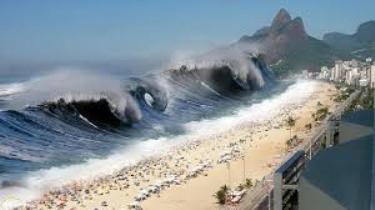A tsunami can strike with little warning, and how you respond in those critical minutes can mean the difference between survival and tragedy. Here’s what science and real-world experience tell us to do if a tsunami erupts.
1. Know warning signs
While official alerts are vital, nature often provides the earliest clues:
A strong, prolonged earthquake when you’re near the coast, possibly lasting 20 seconds or more. That ground shaking is your first alarm
Unusual sea-water behaviour — a sudden and dramatic retreat or rise — can occur minutes before the wave hits
A roaring ocean, reminiscent of a train or jet engine, can accompany tsunami surges
Tsunamis often come in a series of waves, not just one; the first may not be the strongest, and waves can recur for hours
2. React immediately: Drop, cover, hold on and evacuate
During an earthquake, use the universal safety protocol: drop, cover, and hold on until the shaking stops. But the moment the quake ends and you’re in a tsunami zone, do not wait for official warnings. Evacuate on foot, heading to high ground or at least 100 ft above sea level, and preferably more than a mile inland
Read Also | 6.0 magnitude earthquake jolts Greece, followed by Tsunami warning
If you’re in a solid, tall reinforced concrete structure, going above the fourth floor may offer temporary refuge, but natural evacuation remains the safer choice.
3. Prepare before disaster strikes
Study evacuation routes and practice them ahead of time.
Subscribe to alerts via local warning systems and emergency broadcasts.
Build an emergency kit stocked with essentials: water, non‑perishables, first aid, a flashlight, power bank and communication gear.
Keep loved ones in the loop — set up a family communication plan and designate a safe meeting point
4. During tsunami: Stay safe
Evacuate immediately without waiting for announcements
If you’re in a boat, head into deeper open water; if caught in the water, grab a floating object and hold on .
Once in a safe zone, stay put until given all clear; tsunamis may continue for hours or days.
5. After waves: Recovery measures
Avoid floodwaters. They may conceal debris, hazards, and downed power lines .
Use text or social media—cell towers are often overloaded; use non‑voice communication to check in with family.
Document damage with photos for relief or insurance claims.
Don’t return until officially told; structures may be unstable, and official signals might still be ongoing.
Why does this matter?
Indonesia’s 2004 and Japan’s 2011 tsunamis triggered major reforms in early warning systems and public awareness. UNESCO and NOAA now mesh seismographic networks, ocean sensors, sirens, broadcasts, and digital alerts to provide timely warnings
Behavioural studies—like Japan’s 2024 Noto Peninsula event—show that when people act immediately after shaking, evacuations can occur in under 6 minutes and drastically reduce casualties.
Bottom line
Every second counts. If you’re near the coast and experience a strong quake or strange sea behaviour, act immediately—drop, cover, then evacuate without waiting for confirmation. Practiced evacuation routes, ready emergency supplies, and listening to both nature and official channels can greatly improve survival odds. Tsunamis can be powerful and unpredictable, but well-informed action can save lives.
PNN
